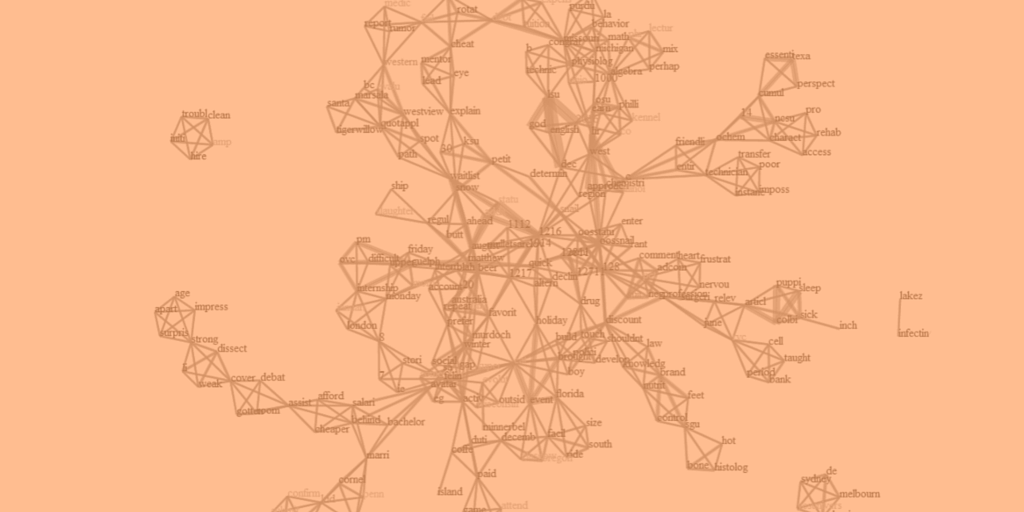What is natural language processing? In short, Natural Language Processing (NLP) is the study of making computers understand how humans naturally speak, write and communicate.
Now that’s out of the way, what does NLP mean for you, me and your drunk friend? Read on to find out.
As CMO at a text analytics company, I’m very interested in the latest data analytics tech. But I realize these topics can be hard to understand. All of the phrases involved can start to sound like plot devices in a Douglas Adams novel. Sentiment analysis, intention detection, machine learning, text analytics, natural language processing… the list goes on.
Still, you need to understand them if you want to bring your business apparatus into the 21st century. With that in mind, here’s a 5-minute primer for all you non-techie types out there.
So, what is natural language processing?
![[what is natural language processing.png]](https://inmoment.com/wp-content/uploads/2022/03/gordonbrown-resized-600-300x107.png)
I’ll say it again: Natural Language Processing (NLP) is the study of making computers understand how humans naturally speak, write and communicate.
When it works, natural language processing enables us to interact with computers like we interact with other humans. Think of a customer service chat bot, or the way Google seems to know what you intended even when you type in “beset drkun food enar me”. Both cases are NLP in action (though we could spend hours talking about failing chat bots).
Think about it this way: traditionally, communicating with a computer would require giving it very precise, unambiguous, and highly structured instructions. Moreover, these had to be written in dedicated programing languages, like Java, C++ and Ruby. This meant that, realistically, only trained software engineers could have any hope of managing a computer.
In short: NLP gives you, me, and your drunk friend the ability to tell a computer what to do.
Java? Whatever, where’s that food at?
I know, right? Who wants to deal with complex computer programming first thing in the morning? (Well okay, I know some people who do that every day. But not you or me!)
![[coffee.png]](https://inmoment.com/wp-content/uploads/2022/03/coffee.png)
Remember, we humans don’t speak to each other like we speak to computers. We don’t always follow the rules. Human communication conveys messages in ways that, while structured with grammar, can be imprecise and ambiguous. Often, like with slang or idioms, words and their meaning can vary region to region in the same country.
This can create big problems when you, me, or your drunk friend try to interact with our phones or laptops. Just think of the misspellings! Without NLP, our computers would be clueless.
With this new knowledge, go back to our original question: what is natural language processing? Here’s the answer:
In the messy landscape of human communication, NLP is the technology that bridges the vast gap between structured and natural (real) language.
NLP + ML = Natural Language Machine Learning
One last thing to touch on before we go. Modern natural language processing is based on machine learning. For example, software engineers use machine learning to to examine patterns within data, and then draw conclusions on how natural human languages work. By applying these conclusions, machines are able to perform complex text analytics tasks better and more efficiently than before.
This combination of NLP and machine learning is called Natural Language Machine Learning (NLML).
For example, consider this tweet:
“This amazing Cloud delivers data to me ASAP”
Here, Cloud is a reference Cloud Computing. And of course, ASAP is the common acronym for As Soon As Possible. That’s pretty obvious to you and me – but how would a computer know that?
It used to be that a developer would’ve had to go in and manually tell the system to recognize those tangential references and acronyms. But with NLML, a modern text analytics system can figure that out on its own. Finally, the system can easily break the rest of the sentence down into its grammatical elements (“amazing” = adjective, “Cloud” = noun, “delivers” = verb, etc.).
Wrap it up and get some java
So, what is natural language processing? It’s the reason you can order a cup of coffee by telling a chatbot to get you exactly what you want. It’s the reason Google knows you’re looking for late-night drunk food near you, even when you butcher the spelling. And it’s the reason Lexalytics, an InMoment company, exists.
Got that all? Great! Now go order a cup of (brown liquid) java using Whatsapp or something.


